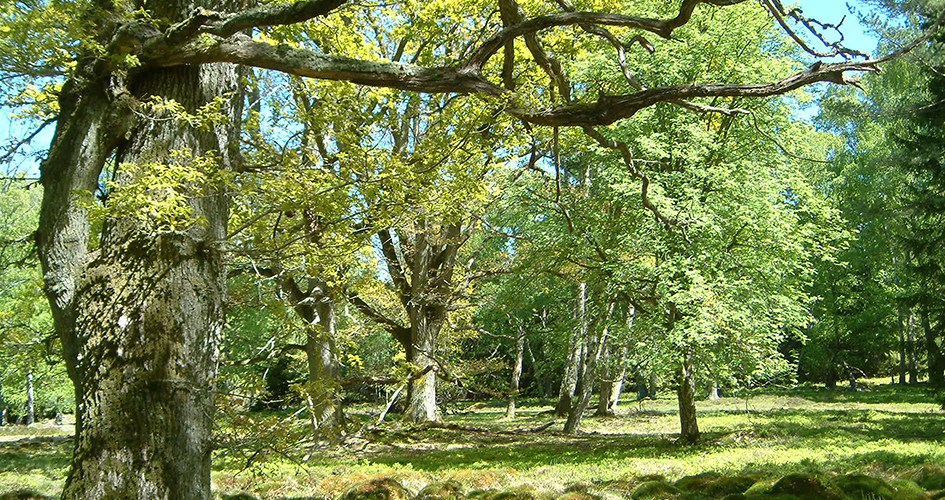 Foto: Anders Stagen
Foto: Anders StagenPlant life
Flora growing on rocky ground is the prevailing type of vegetation on Djurö. It is made up mostly of lichens, lingonberries, bilberries and heather since the island lacks a contiguous soil cover.
Most of the rocky areas are forested, predominantly with pine forest interspersed with deciduous trees. Trees also grow on the smaller islands; only the islets and skerries have the barren profile of the outer archipelago.
A natural landscape
The considerably richer vegetation on the southernmost island probably is due to the lime-rich residue of Cambrian calcarenite in the bedrock. Here you can even see some lime tree specimens. On the island of Gisslan farthest to the south, there is a healthy forest meadow with elements of masur birch and asp. When spring comes, lilies of the valley, wood anemones and hepaticas blossom here. Some logging took place here up until the 1950s, but today the area is a natural landscape.
On Djurö there also are some small patches of land with cultural influences next to an old settlement. In general the island is covered with pine forest. Swampy pine forests with marsh Labrador tea are common in the hollows.
Moist heath and meadowland
Moist heath is a mixture of grassy heath with heather or bilberry pine forest and appears as a border between woodland and swampland. Two smaller areas – both on well-drained, sandy soil – can be classified as dry meadow. There is also a more healthy meadow variation here, where meadow grass, wood meadow grass and meadow fescue are prevalent.
At the centre of the island you will find remnants of a large field where you can see that the transplanted fallow deer have been grazing.
Share with your friends
Share this page with your friends on Facebook, X (formerly Twitter), Google+ and e-mail.





